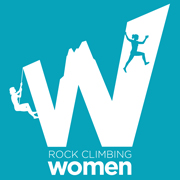Hillary Newkirk and Alison Sexton live and climb in Toronto, Ontario, Canada. They compete on Joe’s B Team at Joe Rockhead’s Climbing Gym, where the two started talking about women’s issues in climbing.
“Alison and I … realized that a lot of what we were talking about was related to women and climbing and our perspective (0f) participating in an often male-dominated sport,” Hillary told RCW.
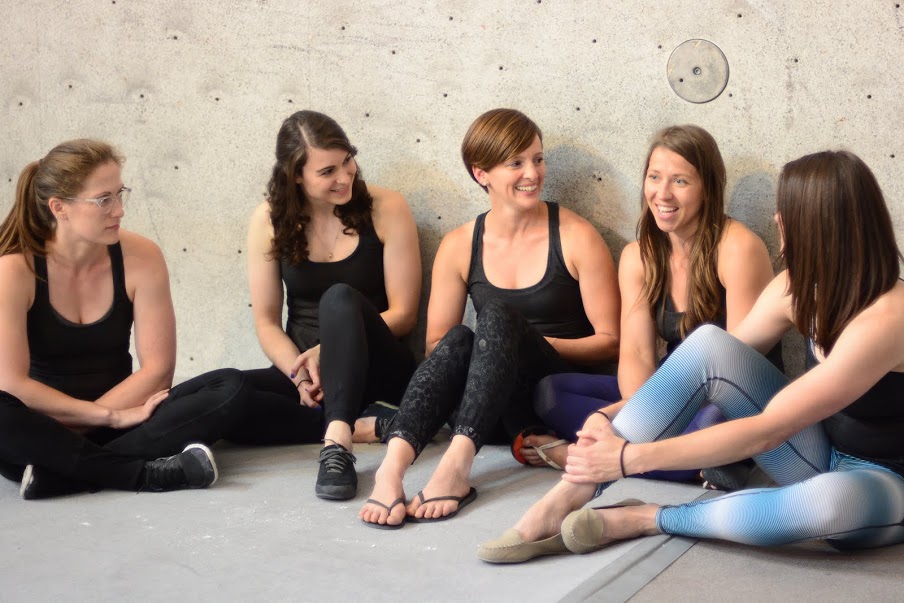
A clinic, they thought, would introduce more women to bouldering and help them build technique and strength while talking about what it means to be a rock climbing woman.
“We set to work planning a beginner clinic where there would be a space to talk about women’s issues and expand people’s comfort zones. We hoped that people would make friends and connections along the way, connecting them to the unique and inspiring climbing community at Joe Rockhead’s,” Hillary said.
Joe’s is filled with helpful people who welcome climbers of all skill levels, she said. “We approached other women in the gym to help, and they were quick to get on board. We had created a team of volunteers who were simply excited about the idea of encouraging more women to boulder.”
The first clinic in November drew 25 participants. At a second clinic in June, the coaches separated climbers into beginner and intermediate groups, drawing 28 women. They focused on technique, climbing etiquette, and safety and gave the women the chance to try different types of problems – including dynos.
“We also encouraged the women to challenge their intimidation in a safe environment with other women of a similar climbing level,” Hillary said. “We’ve already noticed the girls from the clinics using some of the skills we talked about.”
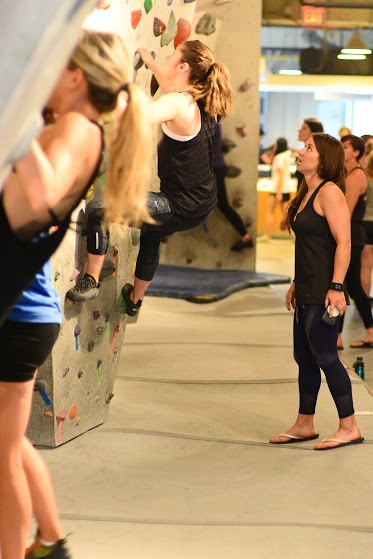
So what does it mean to be a female climber? RCW talked a little more in-depth with Alison and Hillary:
What did some of those conversations about women in climbing look like? What came up?
Alison: Most of the conversation we had on this subject were discussed in the clinic in the fall where we actually had each of the women introduce themselves and discuss what it meant to be female in climbing.
A lot of women expressed their frustrations with men beta-spraying. Beta-spraying can be rather annoying in general, but I think women tend to get frustrated because often the beta doesn’t work for a different body type or gender. Climbing, especially bouldering, is so much about listening to your body and figuring out what works for you. If bouldering is about problem-solving, my partner – who’s taller, has longer arms and legs and different strengths – can’t solve it for me.
Another common theme expressed was when you’re working on a project or problem and a male with less experience and less technique walks up and sends it. This is not typically something you see with other women. This can be extremely frustrating and discouraging! You work so hard for something and someone with a little more upper body strength can just muscle through it. I always remind women (and myself) when this situation arises that once you do get that problem you’ll climb it with more technique and skill as well as muscle because you’ve worked at it.
Some of the other things that I’ve seen personally is women who shy away from jumping. I get it, its counter-intuitive to launch your body off the wall with force and falling is scary, but dynos are an awesome part of this sport. If your short or even average height, jumping is a necessity. Plus if you hope to compete, there’s usually a dyno because let’s face it, they look cool and are loved by spectators. We specifically set dynos in our clinic to challenge this fear and to show women dynos are not only fun but also doable! One of my most memorable moments from the clinic was the look on a participant’s face when I said we were doing dynos – fear and negativity. After working on a few of them she ended up sending a dyno and was ecstatic! The difference between initial fear of the dyno and the send was amazing!
Hillary: I’d also like to talk a little bit about some of the conversations between Alison and I when we were establishing and exploring the idea for the clinics, and between all the coaches once we got the ball rolling. We would get together to do some planning and found that our planning sessions usually turned into long discussions about these types of issues. That was part of why we decided to do women-specific clinics. A lot of what we were talking about, the points Alison makes here, are things that many men don’t relate to. We like the idea of focusing on factors other than one’s physical ability, that may effect people’s climbing experience. Things like who you are climbing with, emotions, internalizing an experience, how much “beta spray” is around you, fear of falling, your general confidence level at that time. Our goal in talking about these things is to help others figure out ways of forging their own path into their own climbing experience and learning how things work best for them. There is no magic solution to overcome challenges because they are different for everyone. We love encouraging people to face those challenges head on, and encouraging the discussions that remind you that everyone has challenges and that we can all help each other.
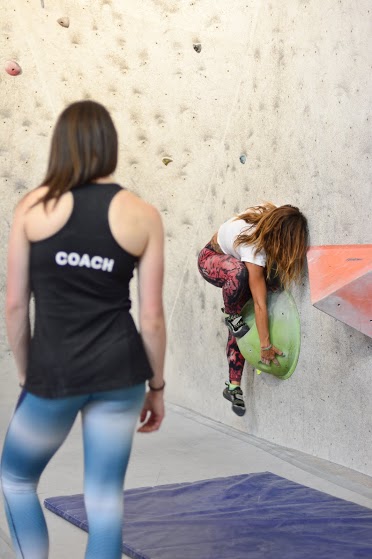
Were you seeing more women coming to the gym climb or did you hope to draw more?
Alison: Our hope was definitely to draw more women! We’re excited about getting more women involved with climbing, especially bouldering, and also to encourage more women to compete. In our local competitions less than half of the total competing are women.
Hillary: I think we will end up drawing more women with what we are doing, which is a really exciting result. We’ve had first-time climbers out at the clinics who wanted to try climbing and this gave them a reason and a non-intimidating space to try it out. Our focus when coming up with the curriculum is to think about what we have experienced, and to pass that on to the new and more experienced climbers alike. It’s building a community, which is great for existing community members, and more inviting and engaging for potential new members (I don’t mean members of the gym necessarily, I mean members of the community. I think, even if you’ve only climbed a few times and enjoy it, that you are already part of the community).
You mentioned you saw women using the techniques they’d learned … seen any other effects?
Alison: Definitely! We’ve been getting a lot of feedback from the clinics and I think it’s helped us judge the success and what to do for next time. For one I think we’ve started a great dialogue about climbing, continuing a lot of the conversations we started in the clinic. One of the women that I directly interacted with said that previously she was frustrated by bouldering because she would see very little improvement. In the clinic I mentioned that some days I can literally measure my progress. “I touched the hold” or simply noticing I’m 1cm closer than I was yesterday to sticking the move. After the clinic she came up to me and said she’s more excited about bouldering because she now understands that what seems to be small progress is still progress. The more times you try it the closer you are but you have to accept the small gains. Plus I love the idea that someone who typically route climbs is interested in bouldering as well.
Finally the other thing I noticed is women who met in the clinic climbing together. One of our main goals was to expand the community so I’m happy to see women connecting and creating their own network.
Hillary: One thing I’ve enjoyed seeing more of is our participants trying problems in the gym that they might not have before because they were intimidated or just didn’t think they could or should. When they do try them, they are using the physical technique they’ve learned, but just the fact that they are trying something outside their comfort zone is hugely rewarding for me as a coach. It opens a lot of doors for a climber who is trying to reach that next level and keep learning about themselves.
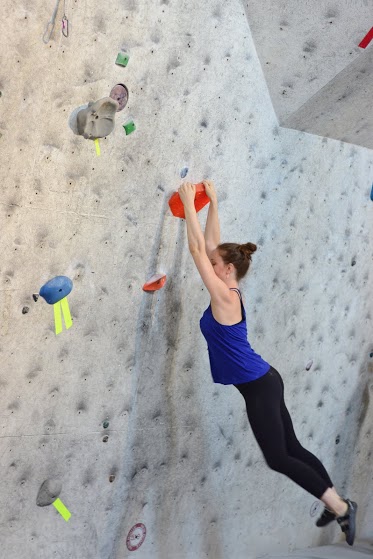
Have you heard from anyone what it meant to have that safe environment to learn?
Alison: From what I’ve heard I think that a lot of the participants appreciate that were acknowledging that intimidation is a big draw back for a lot of women. The feeling of intimidation is one of the biggest reason people don’t stick with the sport. Our hope is introducing women to the supportive community, helping them face their fears, and accepting that these feelings might never go away will help more women to love climbing. I haven’t heard a lot of direct feedback as to what it meant but I think that’s honestly a good thing. Everyone seemed to be comfortable during the clinic and was open to falling, discussing and receiving beta and technique. The fact that everyone was open to the format showed us that it was a safe environment.
Hillary: We had a couple of people try problems in the clinic and not be able to do the start on their first couple of tries. We spent time talking about techniques and trying hard, and by the end they were doing the start plus some moves almost no problem. That was such a neat thing to see and an illustration of what that safe environment accomplishes. It was awesome to see reactions on people’s faces when I reminded them that they couldn’t do that move 10 minutes ago and now it looks downright easy for them. That process is so important in bouldering, being able to commit to trying something and knowing that you might fall, and staying open to the possibility that you may surprise yourself!
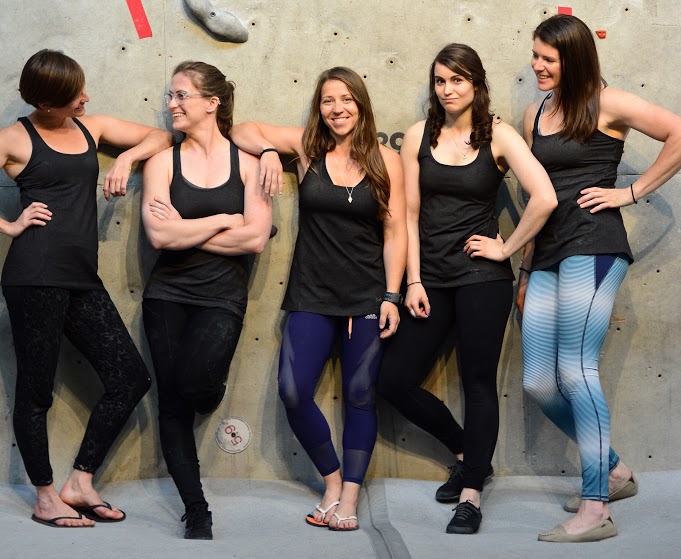
Find the people behind the clinics on Instagram to get updates on future clinics and events. Information is also posted on Joe Rockhead’s Facebook page.
All photos courtesy by Will Johnson
